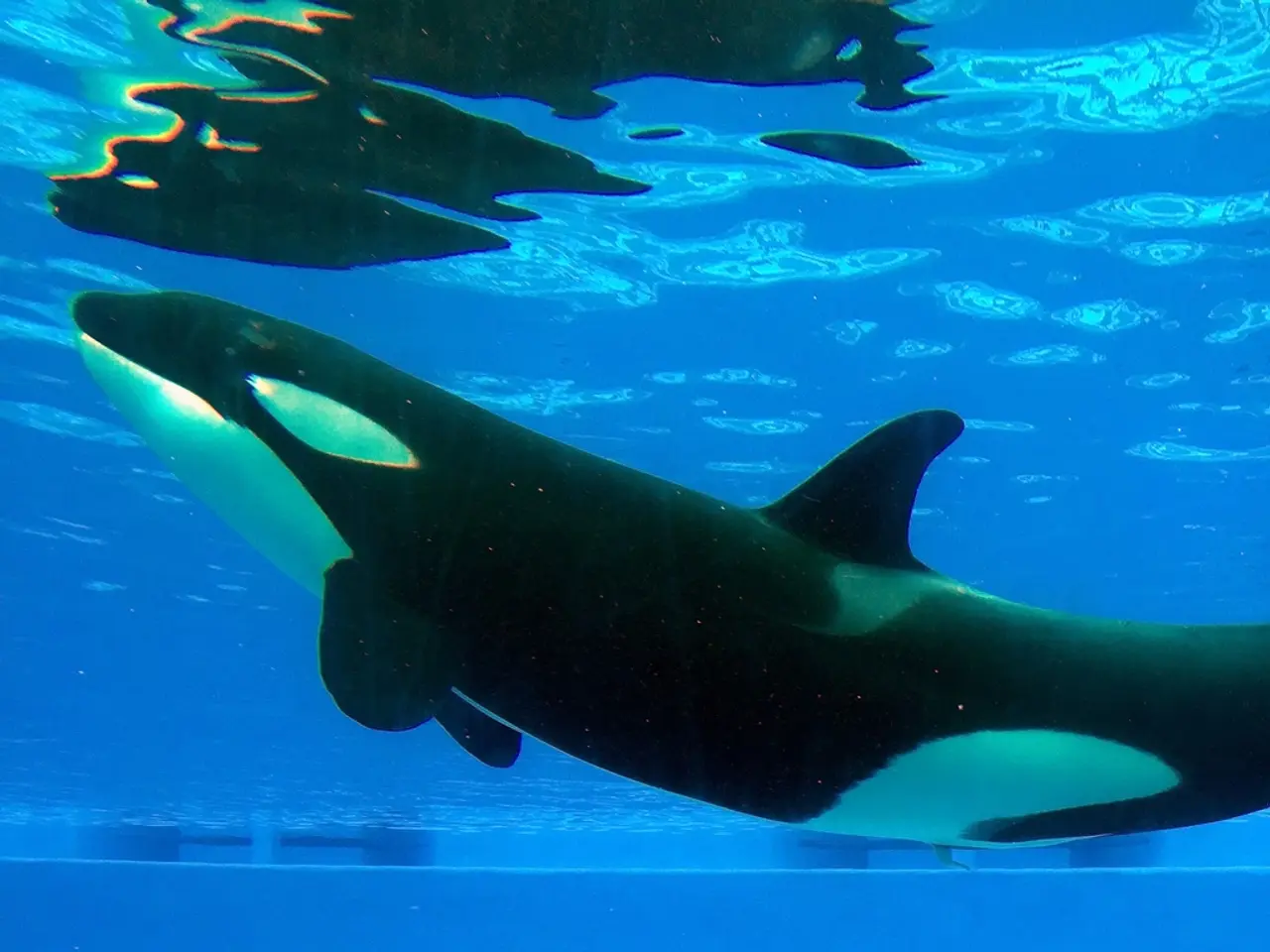Groundbreaking Discovery of a Massive Ancient Blue Whale Fossil, Exceeding Previously Known Dimensions
Giant Blue Whale Fossil Discovered in Italy Shifts Evolutionary Understanding
A groundbreaking discovery by paleontologist Giovanni Bianucci of the University of Pisa has pushed back the timeline of blue whale evolution by over a million years. The fossil, found in Matera, Italy in 2006, is the largest blue whale fossil ever discovered and is estimated to be around 1.5 million years old.
The fossil, which measures 85 feet long, has forced evolutionary biologists to reassess the historical timeline of blue whale evolution. Previous estimates placed the emergence of blue whales or their close ancestors to slightly later dates, but the new fossil evidence suggests that large blue whales existed at least 1.5 million years earlier than previously believed.
The discovery leads to a reassessment of blue whale evolution, indicating that the development of such large body sizes in blue whales did not occur rapidly but rather over a considerable evolutionary timespan. This implies that large rorquals like blue whales had already evolved substantial size by the early Pleistocene rather than the late Pleistocene or later periods.
The current scientific understanding places the emergence of anatomically modern blue whales around 1.5 million years ago during the Early Pleistocene, based on fossil evidence such as a partial skull from southern Italy identified as Balaenoptera cf. musculus. The family Balaenopteridae (which includes blue whales) diverged from other whale families millions of years earlier, but anatomically modern blue whales are known from the Pleistocene onward.
The Matera blue whale fossil does not fit into the established timeframe of rapid increase in whale sizes suggested by a 2017 study. When included in the 2017 data set, the most probable date of gradual whale-size increases has been pushed back to possibly as far back as six million years.
Paleontologist Marx argues that the rise of giant whales has been more gradual than previously believed, based on the discovery of the Matera blue whale fossil and other findings. Marx is currently working on a project in Peru, where numerous whale fossils have been found but not yet recovered, which further supports his theory.
Cheng-Hsiu Tsai, a paleontologist from National Taiwan University, supports Marx's conclusions. Tsai has argued ever since that baleen whales grew bigger and more gradually, in alignment with Marx's conclusions.
The discovery of the blue whale fossil was published in the journal Biology Letters. Marx expects to find something bigger and geologically even older than the Matera blue whale fossil in the future. The blue whale species lived 1.5 million years earlier than previously thought, making it one of the earliest known large marine mammals.
In summary, the Matera blue whale fossil discovery has significantly shifted the paleontological and evolutionary understanding of blue whale evolution. The find extends the known historical timeline of blue whale evolution and highlights the complex evolutionary history of Earth's largest animals.
- The discovery of the blue whale fossil in Italy has also prompted paleontologists to reconsider the history of science, particularly in the field of environmental-science and marine biology, as it challenges previous assumptions about the emergence of such large marine mammals.
- The Matera blue whale fossil discovery underscores the ongoing need for innovation in science, including space-and-astronomy and technology, as the fossil pushes back the timeline of blue whale evolution, making it necessary to revise models of marine life's evolutionary history using updated data.
- The Matera blue whale fossil's significance extends beyond the realm of evolutionary biology; it underscores the importance of understanding the history of our environment and the species within it, which is often studied through the lens of science, emphasizing that discoveries like these can offer invaluable insights into the past that shape our understanding of the present and future.




